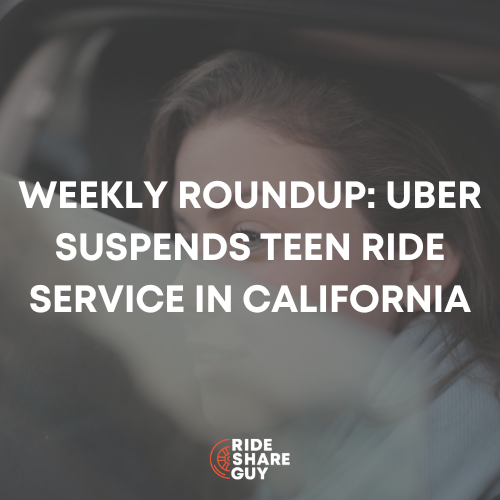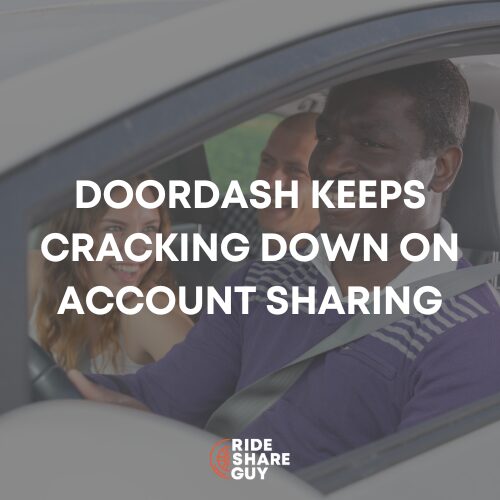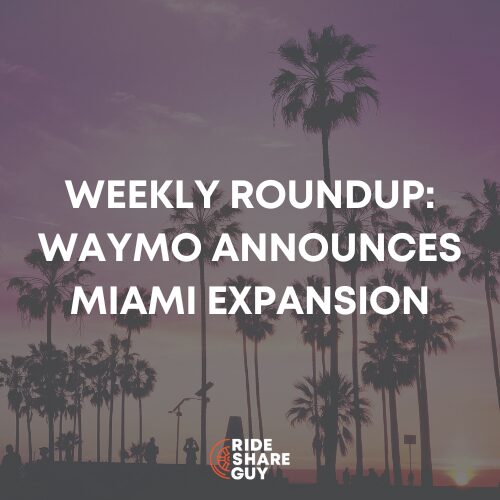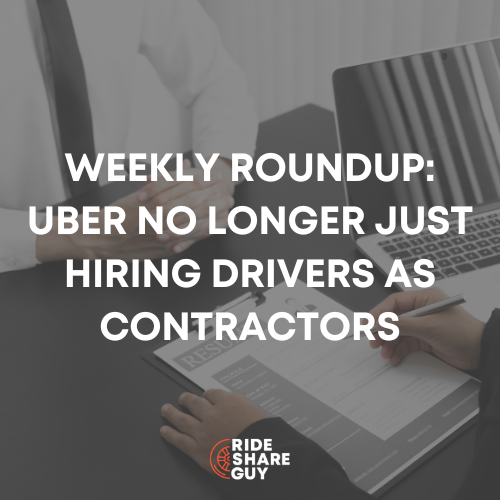Let’s dive into our weekly round-up with senior RSG contributor Paula Lemar.
Uber added 14 new cities to its EV ridesharing service, while Lyft gained a new CEO after the co-founders stepped down.
Seattle has long been a leader in better conditions for rideshare and delivery workers, and this week, it was announced that Seattle’s PayUp policy now includes paid sick and safe time.
Lyft’s Co-Founders to Step Down as Company Struggles
Topic Originally Seen on New York Times
Summary
Lyft’s co-founders said on Monday that they would step down from their day-to-day responsibilities at the company, which has struggled through layoffs and disappointing financial results even as Uber, its biggest rival, has strengthened.
The founders — Logan Green, Lyft’s chief executive, and John Zimmer, its president — will stay on the company’s board of directors, they said.
After starting Lyft in 2012, Mr. Green and Mr. Zimmer, now both 39, were high-profile personalities in its early days. They presented Lyft as a friendly alternative to Uber and its aggressive chief executive, Travis Kalanick, and avoided many of the controversies that enveloped their competitor.
Vehicles driving for Lyft were easy to spot when the company started. They often had a fuzzy, pink mustache stuck to their front grille, and Lyft passengers for a time were even encouraged to sit in the front with the driver….
My Take
It seems like Lyft suffered from the pandemic more than its competitors. That might be because gig platforms like Uber offer more than just rideshare services, where they were able to expand and divert their focus while the majority of people were staying home.
Now that the pandemic is over, Lyft still struggles to get a better footing. The new CEO, Risher, says that part of the problem is people are still staying home. It sounds like Risher will focus on the customers to turn things around.
Read more about the new CEO and his views for Lyft moving forward in Jay Cradeur’s article How Will The New Lyft CEO David Risher Impact Driver Revenue?
Most Gig Workers Paid Sick Leave Under New Seattle Law
Topic Originally Seen on AP News
Summary
Most gig workers in Seattle will be permanently entitled to paid sick leave and safe time under a first-in-the-nation law signed by Seattle Mayor Bruce Harrell on Wednesday. The measure expands pandemic-era protections and strengthens labor rights for app-based workers.
Seattle previously allowed food delivery workers to accrue paid sick and safe time, but that policy was due to expire on May 1, six months after the end of the emergency order imposed by the city during the coronavirus pandemic.
The City Council voted unanimously Tuesday to make it permanent for “on-demand” gig workers on apps such as DoorDash, Postmates, and Instacart….
My Take
I truly think that more cities and states should follow suit with Seattle and treat gig workers better.
Just because the platforms don’t want to doesn’t mean these workers shouldn’t get basic benefits like paid sick leave and minimum wage, especially since gig workers can’t set their wages like most independent contractors can.
Seattle has taken more strides than any other city in providing protections and benefits to gig workers.
They have a Driver Resolution Center, a minimum wage for gig workers, and now the added benefit of paid sick leave.
Uber Adds 14 New Cities To Its EV Rideshare Service
Topic Originally Seen On Engadget
Summary
Uber announced today that it’s adding 14 new markets to Comfort Electric, its EV rideshare service. The program allows you to hail electric vehicles like the Tesla Model 3, Ford Mustang Mach-E, and Polestar 2. It’s another small step toward the company’s goal of phasing out gas-powered vehicles by 2030.
Beginning today, Uber’s Comfort Electric program adds availability for Detroit, Indianapolis, Jacksonville, Minneapolis / St. Paul, Montreal, Nashville, New Orleans, Orlando, Palm Springs, Phoenix, Pittsburgh, Salt Lake City, Tampa Bay, and Toronto.
The program’s rollout began last May in California and expanded to 25 US markets in September. Comfort Electric is separate from Uber Green, which costs the same as UberX but includes hybrid vehicles in addition to electrics. The company also offers e-bikes and e-scooters in partnership with Lime for customers who can skip cars altogether.
Uber says it will spend $800 million to help its drivers transition to EVs. It partnered with Hertz to help supply EVs while offering a (limited-time) Zero Emissions incentive, letting EV drivers earn an extra $1 on every trip (up to $4,000 per calendar year).
Other driver perks include $100 off a Wallbox EV charger and another $100 off installation. In addition to its 2030 goal of zero emissions in North America, the company plans to cut its carbon emissions in half by 2025, and it wants to hit zero emissions globally by 2040….
My Take
The goal deadlines that Uber, Lyft, and other platforms (and cities) have for zero emissions are fast approaching.
We’re in 2023, and they want to phase out gas-powered vehicles by 2030. Seven years isn’t very long to get to that point.
If there’s one thing we all learned during the pandemic and lockdowns, time means nothing. It can go slower than molasses in some ways but also blur into nothing in others.
Seven years will pass by in the blink of an eye, and there aren’t “enough” people out there willing to make the transition without added incentives.
It’s hard to get people to go to a restaurant they’ve never been to before, let alone switch what kind of vehicle they’ll use. We’re creatures of habit, and that will take time and effort to change.
There have been incentives out there, but not everyone seems to be aware of them.
Related:
Escape From LAX; How To Save Time, Money, Sanity Leaving Chaotic Airport
Topic Originally Seen On Forbes
Summary
Los Angeles International Airport, universally known as LAX, has been a travel nightmare for years. But there are tips and tricks you can use to escape the airport, even if, as the saying goes, “Friends don’t make friends pick them up at LAX.”
A major worldwide gateway and an attractive destination in its own right, LAX was the second-busiest airport in the U.S. before the pandemic. A record 88.1 million passengers used LAX in 2019. If you do the math, that works out to 241,000 people per day.
Post-pandemic, all those people are coming back. It can seem like all of them are coursing through the terminals, stuck in baggage claim, jamming the lounges, or waiting at immigration at the same time.
Even when travelers get outside, the white curb can be packed with passengers waiting for a limo, a bus, a shuttle (to parking, rental cars, or hotels), or pickup by an unfortunate relative. Unlike many cities, LAX lacks a “train to the plane” to get out of the airport and into town….
My Take
As a traveler, I’ve found LAX to be a very busy airport that is difficult to get in and out of.
I had my brother-in-law pick me up one time, and he was in the airport loop but not quite to me yet for a good half an hour, and then we were stuck for another half an hour after he picked me up.
It’s such a headache that I usually try to fly into Burbank airport instead. And for people who need to use the airport regularly? Forget about it. It’s a hassle and a half.
I get that LA is overly congested anyway, but the airport needs to develop better traffic flow solutions.
Life in the Gig Economy: The Guy Who Made a YouTube Channel Giving Rideshare Tips
Topic Originally Seen On Fast Company
Summary
Pedro Santiago is a 41-year-old gig worker in St. Louis who drives for Uber, Instacart, and DoorDash. He also runs a YouTube channel offering insights and advice about rideshare and delivery jobs. Having worked in the gig economy for almost three years, this is what the experience has been like, in Pedro’s own words.
I came into gig work about four or five months pre-COVID. I did it just after work. I had a vacation coming up and I wanted to save. I started doing rideshare because I was a rideshare passenger.
I thought I could do this and just pay for this trip, work for a few months, and then not have anything to worry about, like dipping into savings or doing anything else.
I did that and I kind of got hooked. That’s when I got furloughed from my job. I was a food and beverage director at a casino. I did gig work in the meantime until I went back to the casino, and then I left the casino and started doing it full-time. Now I’m back to part-time.
My Take
We love hearing about successful rideshare enthusiasts who make a living doing what they love. It’s so neat that it went from a part-time job to save money for a trip to something bigger and better.
And now he’s back to part-time again. These gig platforms can be anything you want and need them to be if you’re ready and willing to commit to it.





